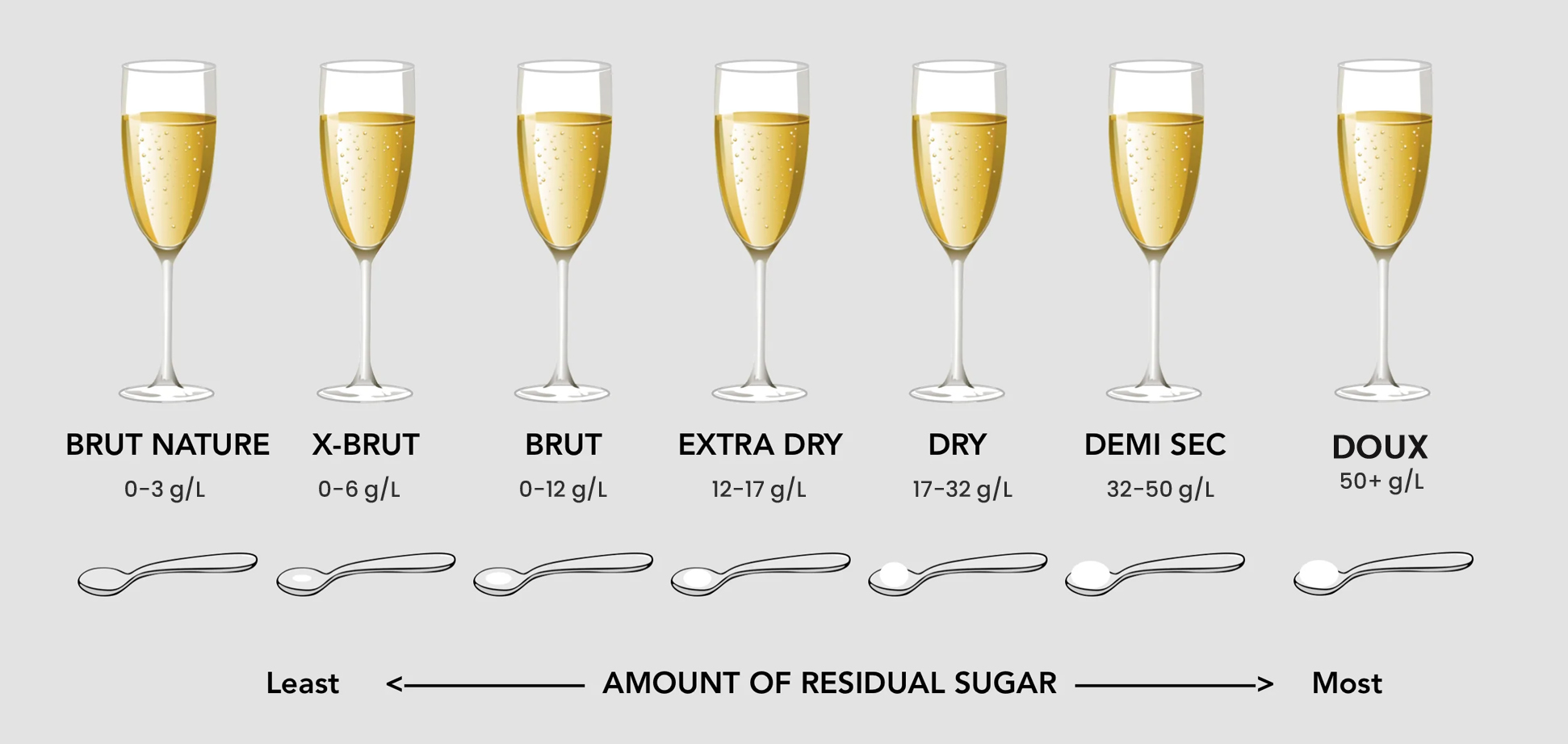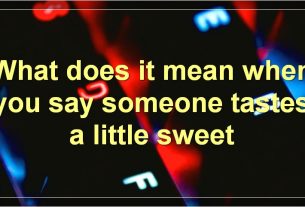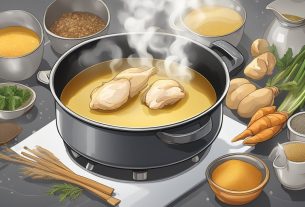Champagne, the epitome of elegance and celebration, holds a mysterious allure for many.
Have you ever wondered what this iconic French bubbly actually tastes like?
Prepare to be intrigued as we dive into the world of Champagne, exploring its silky texture, lively bubbles, and enchanting flavor profiles that can transport you to the heart of the Champagne region.
Discover the captivating taste that has captivated connoisseurs for centuries.
what does champagne taste like
Champagne has a distinct taste that reflects the terroir of the Champagne region in France.
It typically has dominant notes of citrus, almond, and green fruit, along with floral and sometimes herbal flavors.
Champagne is known for its creamy texture and effervescence, with velvety bubbles.
The choice of grapes used, such as Chardonnay, Pinot Noir, and Pinot Meunier, contributes to its flavor and aroma profile.
The sweetness level of Champagne varies, with terms like Brut representing low sugar content and Doux representing the sweetest Champagne.
Expensive Champagne has consistently streaming bubbles and a more complex flavor profile, while cheaper Champagne may have smoother but less complex flavors.
Champagne is often associated with celebrations and is best served chilled in a flute glass.
It pairs well with a variety of foods, including cheeses, seafood, poultry, sushi, and desserts.
Key Points:
- Champagne has a distinct taste influenced by the Champagne region in France
- Dominant notes of citrus, almond, and green fruit, with floral and herbal flavors
- Champagne has a creamy texture and velvety bubbles
- The choice of grapes used contributes to its flavor and aroma
- The sweetness level of Champagne varies, with Brut being less sweet and Doux being the sweetest
- Expensive Champagne has consistently streaming bubbles and complex flavors, while cheaper Champagne may have smoother but less complex flavors
what does champagne taste like – Watch Video


Pro Tips:
1. Champagne Tidbit #1: In blind taste tests, experts have difficulty distinguishing between high-quality sparkling wines and less expensive Champagne alternatives. The bubbles and acidity of these wines often create similar sensory experiences.
2. Champagne Tidbit #2: Did you know that proper Champagne glasses, known as flutes, were designed to preserve the fizz and enhance the tasting experience? The tall, narrow shape helps retain the carbonation and captures the wine’s aromas.
3. Champagne Tidbit #3: Despite its association with luxury and celebration, Champagne was initially created by accident. In the 17th century, winemakers in the Champagne region of France faced difficulties when colder weather halted the fermentation process, leaving some bottles naturally sparkling.
4. Champagne Tidbit #4: While most people think of Champagne as a golden elixir, some varieties can actually appear pink or rosé in color. The pink hue is achieved by allowing the grape skins to briefly interact with the juice during the production process.
5. Champagne Tidbit #5: Moët & Chandon, a well-known Champagne producer, introduced the world to the concept of vintages by releasing the first-vintage Champagne in 1840. Prior to this, Champagne was typically blended from different years, without emphasizing the specific vintage.
1. Flavor Profile Of Champagne: Citrus, Almond, And Green Fruit
The flavor profile of Champagne is diverse and sophisticated. It originates from the cool climate, chalky soils, and high-altitude vineyards of Northern France’s Champagne region. This iconic sparkling wine showcases a unique terroir-driven taste.
When you sip a glass of Champagne, expect to encounter dominant notes of citrus, almond, and green fruit. The vibrant acidity of the wine imparts a refreshing zest reminiscent of lemon and grapefruit, while the subtle nutty undertones add layers of complexity.
In addition, Champagne often exhibits floral aromas, with delicate hints of flowers and a touch of herbal essence. These flavors combined create a symphony of sensations that dance on your palate with each effervescent sip.
- Champagne is primarily produced in the cool climate, chalky soils, and high-altitude vineyards of Northern France’s Champagne region
- The flavor profile of Champagne includes dominant notes of citrus, almond, and green fruit
- The wine has a vibrant acidity that imparts a refreshing zest of lemon and grapefruit
- Champagne often exhibits floral aromas, with delicate hints of flowers and herbal essence
2. Creamy Texture And Effervescence Of Champagne
One of the distinguishing features of Champagne is its creamy texture, which lends it a luxurious and indulgent character. The bubbles that elegantly rise to the surface enhance both the taste and the overall experience of drinking Champagne. The effervescence, triggered by the secondary fermentation that takes place in the bottle, creates a sense of liveliness and excitement. As the bubbles gently tickle your tongue, they enhance the wine’s flavors and create a delightful sensation in your mouth. The effervescence also contributes to the wine’s mouthfeel, giving it a light and frothy texture that glides across your palate. This unique combination of creaminess and effervescence distinguishes Champagne from other sparkling wines and adds to its allure.
3. Quality Champagne: Velvety Mouthfeel And Rich Aroma
When it comes to Champagne, quality makes all the difference. High-quality Champagne offers a velvety mouthfeel that envelopes your tastebuds, leaving behind a luxurious sensation. The careful craftsmanship and attention to detail in its production contribute to this remarkable texture. Moreover, the aroma of quality Champagne is exceptionally rich and inviting. As you bring the glass to your nose, you’ll be greeted by a symphony of scents, including vibrant citrus, luscious almonds, and creamy notes. This captivating aroma sets the stage for an extraordinary tasting experience, enticing your senses and offering a preview of the complex flavors that lie within.
4. Grape Varieties In Champagne: Chardonnay, Pinot Noir, And Pinot Meunier
The choice of grapes used in Champagne production plays a pivotal role in shaping its flavor and aroma profile. Three grape varieties dominate the Champagne region:
- Chardonnay: The only white grape in the trio, lending Champagne elegance, finesse, and a vibrant citrus character. It contributes to the wine’s acidity and brings forth flavors of crisp green apple and zesty lemon.
- Pinot Noir: A black grape known for its depth and complexity, adding structure and body to Champagne. It imparts flavors of ripe berries and hints of red fruit, contributing to the wine’s depth and complexity.
- Pinot Meunier: Another black grape variety, bringing a touch of freshness and fruitiness to the blend, with subtle notes of pear and melon.
The combination of these grape varieties creates the harmonious blend that defines Champagne’s distinct personality.
5. Understanding Sweetness Levels In Champagne
Champagne comes in varying levels of sweetness, which are indicated on the bottle’s label. These sweetness levels are determined by the amount of sugar added during the dosage, or the final stage of production. Each level of sweetness imparts a different taste experience.
-
Brut is the most popular and fairly dry Champagne, with up to 12 grams of sugar per liter. It showcases the purity of the wine’s flavors without excessive sweetness.
-
Extra Dry, Extra Sec, or Extra Seco Champagnes are slightly sweeter than Brut, containing between 12 to 17 grams of sugar per liter.
-
The Dry, Sec, or Seco style is considerably sweeter, with 17 to 32 grams of sugar per liter.
-
Demi-Sec and Demi-Seco Champagnes provide a sweeter experience, with approximately 32 to 50 grams of sugar per liter.
-
Lastly, Doux, Sweet, or Dulce Champagnes are the sweetest, containing 50 or more grams of sugar per liter. The choice of sweetness level allows Champagne lovers to find their preferred taste profile within this effervescent world of flavors.
6. Types Of Champagne: Blanc De Blanc, Blanc De Noirs, Rosé
Champagne comes in a variety of styles, offering different expressions of taste and character. A Blanc de Blanc is Champagne made entirely from white grapes, typically 100% Chardonnay. It exhibits a light and crisp flavor profile, with a focus on citrus and green fruit. Blanc de Blanc Champagnes are known for their purity and elegance. On the other hand, Blanc de Noirs is Champagne made from 100% black grapes, such as Pinot Noir or Pinot Meunier. This style presents a richer and more robust taste, with flavors of dark berries and hints of earthiness. The blending of red and white grapes gives rise to Rosé Champagne, with its delightful pink hue. The taste of Rosé Champagne varies depending on the winemaking process, ranging from vibrant and fruity to complex and savory. These different styles of Champagne provide an array of options, catering to diverse palates and preferences.
7. Characteristics Of Expensive Champagne: Streaming Bubbles And Complex Flavor
Expensive Champagne distinguishes itself through its impeccable craftsmanship and attention to detail. One of the visual indicators of quality is the consistently streaming bubbles that gracefully rise through the wine, showcasing precision and expert winemaking. This mesmerizing sight not only adds to the aesthetic appeal but also enhances the drinking experience.
Beyond appearances, expensive Champagne offers a more complex flavor profile. Alongside the dominant citrus, almond, and green fruit notes, you may discover subtle tastes of vanilla, peach, lemon, and honeysuckle. These nuanced flavors contribute to the depth and multi-layered experience that defines luxurious Champagne. Each sip is an exploration of refined tastes and captivating sensations, making expensive Champagne a truly indulgent pleasure.
- Impeccable craftsmanship and attention to detail distinguish expensive Champagne.
- Consistently streaming bubbles showcase precision and expert winemaking.
- The visual appeal adds to the drinking experience.
- Complex flavor profile: citrus, almond, green fruit, vanilla, peach, lemon, and honeysuckle.
- Nuanced flavors contribute to a depth and multi-layered experience.
- Each sip is an exploration of refined tastes and captivating sensations.
8. Cheaper Champagne: Sweeter And Less Complex Flavors
Cheaper Champagne can still offer enjoyable and accessible options for those seeking a more effortless drinking experience. It often exhibits sweeter and smoother flavors, catering to palates that favor a touch of residual sugar. While the flavor profile may be less intricate compared to expensive Champagne, it still provides a pleasant effervescence and a taste suitable for casual occasions and celebrations. Cheaper Champagne offers an opportunity to enjoy the spirit of Champagne without breaking the bank.
- Cheaper Champagne can be enjoyable and accessible
- Sweeter and smoother flavors cater to those who prefer residual sugar
- Provides a pleasant effervescence and suitable taste for casual occasions and celebrations
“Cheaper Champagne offers an opportunity to enjoy the spirit of Champagne without breaking the bank.”
9. Serving Champagne: Temperature And Glassware
To fully appreciate the taste and flavor of Champagne, it should be served at the appropriate temperature and in the right glassware. Ideally, Champagne should be chilled to a temperature between 8-10°C (47-50°F). This range helps preserve its freshness and ensures that the effervescence remains lively.
The traditional Champagne flute is often regarded as the best glass for serving Champagne. Its elongated shape allows the bubbles to rise elegantly through the liquid, enhancing the visual display. Additionally, the narrow opening helps retain the wine’s aromas, guiding them towards your nose as you take a sip.
Drinking Champagne from the appropriate glassware at the right temperature enhances the overall experience, allowing you to fully savor its flavors and fragrance.
- Serve Champagne at 8-10°C (47-50°F) for optimal taste and freshness
- Champagne flute is recommended for serving, as its shape enhances bubbles and retains the wine’s aroma
- Experience the full flavors and fragrance of Champagne by following these guidelines
10. Pairing Champagne With Food And Enjoying As A Digestif
Champagne’s versatility extends beyond its standalone enjoyment. It pairs exceptionally well with a variety of foods, elevating the dining experience to new heights. Its lively acidity and effervescence provide a refreshing contrast to rich and creamy dishes, making it an ideal companion for cheeses, such as Brie or Camembert. Champagne’s delicate yet complex flavors also harmonize beautifully with seafood delicacies like lobster, shrimp, crab, and oysters. The wine’s elegance and effervescence complement the diversity of sushi flavors or seafood-centric dishes like smoked salmon. Additionally, Champagne’s acidity helps cut through the richness of poultry dishes, adding a layer of brightness to roasted chicken or duck. For those with a sweet tooth, Champagne can be enjoyed as a digestif, pairing wonderfully with desserts like gelato or ice cream. Its effervescence and crisp acidity provide a perfect balance to the richness of the desserts, cleansing the palate and leaving a refreshing finish.
In conclusion, Champagne offers a taste experience that embodies the essence of the Northern France Champagne region. With dominant flavors of citrus, almond, and green fruit, paired with a creamy texture and effervescence, it delights the senses from the first sip. The choice of grape varieties, the sweetness levels, and the different types of Champagne all contribute to the diverse range of flavors and styles available.
-
Whether you opt for an expensive Champagne with streaming bubbles and complex flavors or a more affordable option with sweeter and approachable characteristics, the enjoyment of Champagne is a luxurious affair.
-
Served at the right temperature in the appropriate glassware, Champagne can be savored on its own or paired exquisitely with a wide array of foods.
So, whether you are celebrating a special occasion or simply indulging in the finer things in life, Champagne offers a taste of luxury that can be appreciated by connoisseurs and newcomers alike.

You may need to know these questions about what does champagne taste like
Is Champagne sweet or bitter?
Champagne can possess a range of flavors, but its overall taste profile tends to lean towards being more on the sweeter side. During the process known as “liqueur d’expedition,” a small amount of grape must or sugar is added to the Champagne before sealing the bottle. This is done to counterbalance the wine’s natural acidity and mitigate any sharp or sour notes, resulting in a more enjoyable and harmonious drinking experience. Although not overly saccharine, the added sweetness contributes to Champagne’s pleasant and balanced flavor profile.
What does Champagne taste like compared to wine?
Champagne, renowned for its distinct characteristics, offers a unique tasting experience compared to wine. Its aging process contributes to a more robust flavor profile, resulting in a full-bodied sensation that captivates the palate. On the other hand, sparkling wine tends to lean towards a sweeter and fruitier taste, encapsulating a lighter and more refreshing essence. Both Champagne and wine have their own enchanting flavors, providing delightful options for different palates and occasions.
Does Champagne taste like alcohol?
Champagne does contain alcohol, but its taste is much more than just the alcoholic sensation. With dominant notes of citrus, almond, and green fruit, Champagne offers a complex and refreshing flavor profile. Its effervescence adds a unique element, enhancing the experience of sipping this iconic sparkling wine. The creamy texture and occasional hints of floral and herbal flavors further contribute to Champagne’s distinct character, making it much more than just an alcoholic beverage. Ultimately, Champagne is a delightful symphony of flavors that goes beyond the mere taste of alcohol.
Does champagne get you drunk?
Drinking champagne can certainly get you drunk, but it depends on various factors such as your tolerance, body weight, and metabolism. Although a single glass of champagne typically contains 4 ounces, it may not necessarily intoxicate everyone. However, consuming around 12 ounces, which is equivalent to three standard glasses, can generally result in feeling the effects of alcohol. Remember to drink responsibly and be aware of your own limits to ensure a safe and enjoyable experience.
Reference source
https://www.vinovest.co/blog/how-does-champagne-taste
https://winefolly.com/deep-dive/how-much-sugar-in-brut-champagne/
https://www.youtube.com/watch?v=3u7RXNujUug
https://hopefamilywines.com/blog/sparkling-wine-vs-champagne-whats-the-difference/



